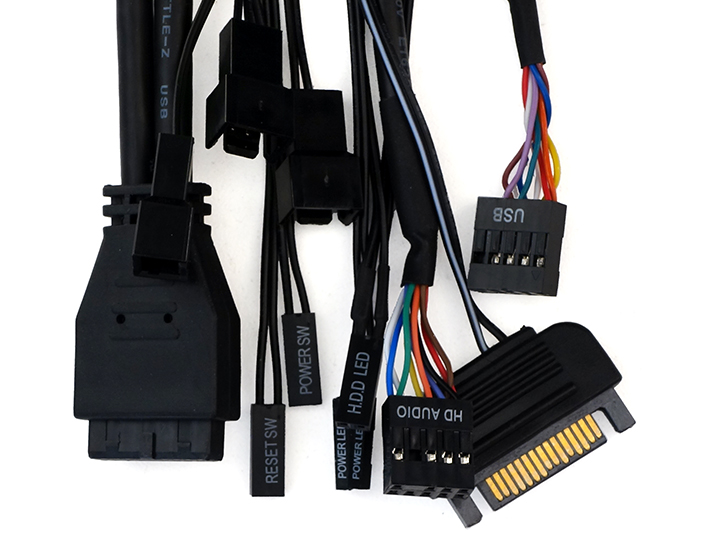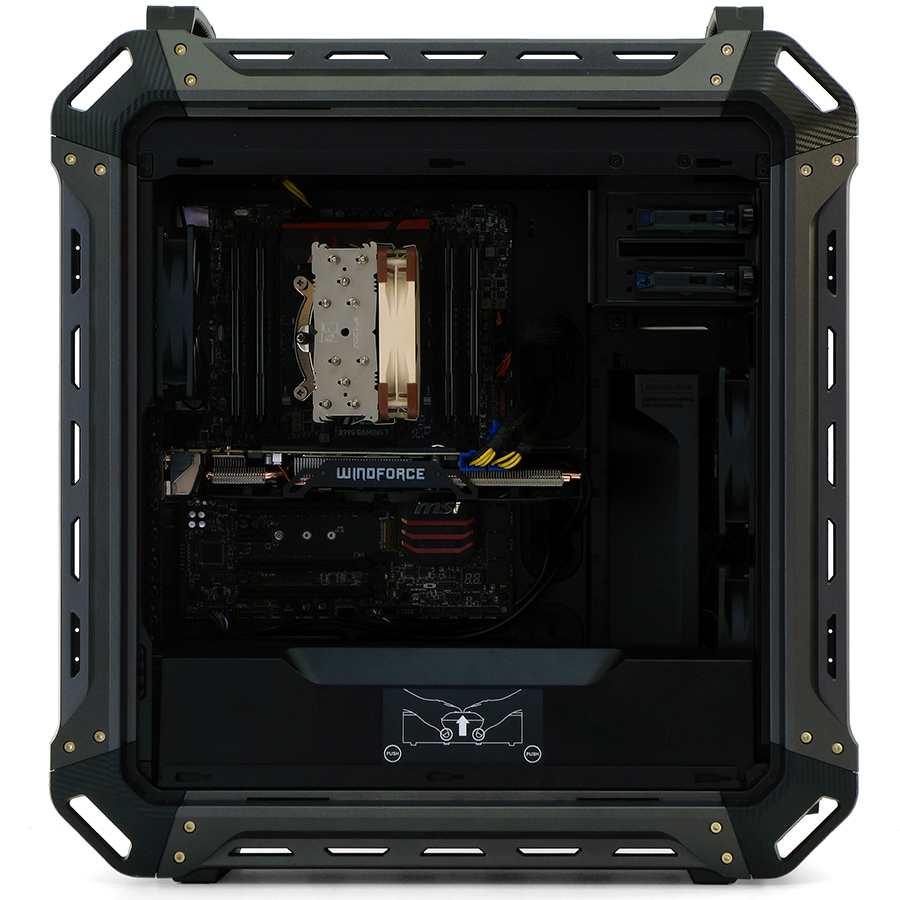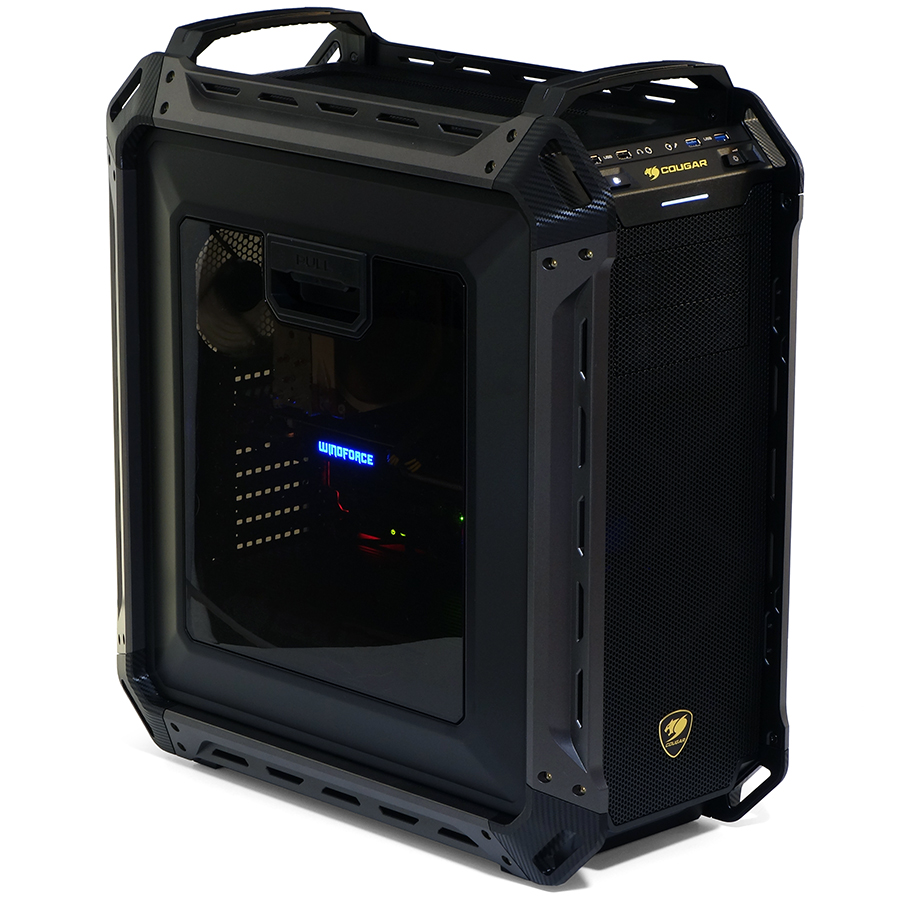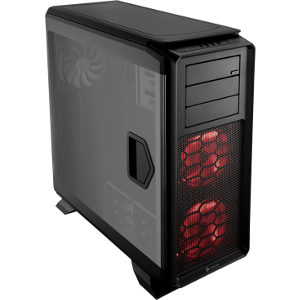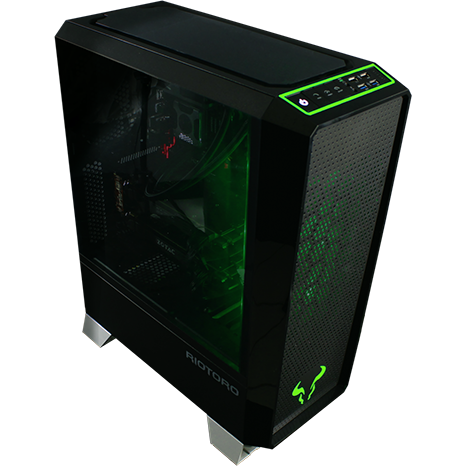Cougar Panzer Max Big-Tower ATX Case Review
Why you can trust Tom's Hardware
Installation & Configuration
The Panzer Max installation kit includes two 3-fan splitter cables, eight motherboard standoff screws, a large number of drive and fan screws, power supply screws, additional standoffs, rubber washers, a screw-on headphone bracket with screws, cable ties, rubber grommets to replace the knock-out plugs in the back of the case, and a slot cover to replace the one that’s not installed. The installation kit does not include an extra thumb screw to match those holding the other slot covers.
A SATA-style power input is wired through the fan controller to three 3-pin outputs. Adding the two fan power splitters allows the fan controller to address up to seven total fans.
The Panzer Max, which supports cards up to 12.3” long (16” with the air guide removed), holds our standard ATX configuration with much room to spare.
The Panzer Max certainly looks the part of a gaming case, even going as far as to accurately reproduce the look of the uncoated carbon fiber used to reduce weight in some of today’s top supercars. I’m not sure how that coincides with the Jerry Can shape, but such small aesthetic judgements are best left to the buyer.
We’re using our overclocked Core i7-5930K test platform to compare the Panzer Max to similarly-sized eight-slot cases, namely the Corsair 760T and Riotoro CR1280. The two competing cases have lighting, as well as the extra standoffs needed to claim true EATX (13”-deep) motherboard support, in addition to all those oversized-ATX gaming boards so often called EATX. Methods and settings have been retained for two years to allow you to compare the results from other case reviews to those included in the charts.
Comparison Products
Test Configuration
| Drivers & Settings | |
| Chipset | Intel INF 9.4.2.1019 |
| CPU | 4.2GHz (42x 100MHz) @ 1.2V Core |
| Motherboard | Firmware 17.8 (02/10/2015) |
| RAM | XMP CAS 16 Defaults (1.2V) |
| Graphics | Maximum Fan for Thermal Tests | Nvidia GeForce 347.52 |
MORE: Best Cases
Get Tom's Hardware's best news and in-depth reviews, straight to your inbox.
MORE: All Case Content
Current page: Installation & Configuration
Prev Page Features & Specifications Next Page Benchmarks & Final Analysis-
Crashman Reply
Do you see the + sign at the bottom of the specs? It's a drop down list. Click that.19947019 said:How many hard drives does it holds?
-
Crashman Reply
It says it has (2) 3.5/2.5" bays and (4) 2.5"-only bays. So it can hold up to two 3.5" drives and up to four 2.5" drives, or up to six 2.5" drives with no 3.5" drives.19948794 said:I did, it wasn't clear, I checked in newegg... not impressed.
I think it could have been more clear if the 2.5"-capability wasn't listed for the 3.5" bays, but then it would be less informative.
It's a cheap case, built a little better than some others, but priced a little higher than those. I wouldn't expect anyone to really be impressed unless it was really cheap.
-
trevor_dennis Somebody asked how many drives it takes, and while crashbloke pointed out that 'some' information was in the drop down, we shouldn't need to rely on that, and if you used a bit of light for the photographs, we wouldn't need to. I found it incredibly frustrating that I could not properly assess whether this case would suit my upcoming build, because the images showed the case internals as near solid black with the occasional led or silhouette of a fan at the back of that particular view.Reply
As a video editor, I have a lot of storage, and currently have 16 drives. Seven of those are USB3 externals, and four are 2.5 SSD, but the balance are 3.5HDD. As things stand, I have no idea if I could get them all in this case. -
trevor_dennis OK, I've had my wee rant about the dark images, so to be fair, I knew while typing my last post I'd be able to copy the images into Photoshop, and boost the Shadow, lift the Clarity, and nudge exposure, and I was left with perfectly usable images, but we shouldn't need to do that.Reply -
Crashman Reply
It's perfectly clear on my monitor. You're asking that we lighten the images so they're easier to see on poorly adjusted monitors?19951038 said:OK, I've had my wee rant about the dark images, so to be fair, I knew while typing my last post I'd be able to copy the images into Photoshop, and boost the Shadow, lift the Clarity, and nudge exposure, and I was left with perfectly usable images, but we shouldn't need to do that.

